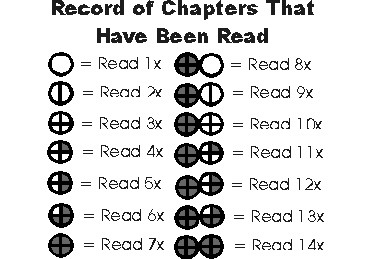
The “Ploughing” Method Brings the Bible to Life
Most people will either read a random portion of Scripture here and there for their time with God, or they will attempt the “Marathon Bible Reading” approach. They will start at Genesis and try reading through their Bibles from cover to cover. This usually bogs people down and by the time they get to the book of Numbers, they are totally directionless and frustrated. Some people will take random books of the Bible and try and study them, one at a time. Any type of Bible study is better than nothing. Even using a devotional guide, or text cards are a help. What is the ultimate method of studying for a new student?

The “Ploughing” Method Brings the Bible to Life
The "Ploughing Method" breaks down the Bible into smaller sections and allows the reader to get a broad picture of Scripture as a whole. Firstly, studies are divided up into the Old Testament on one day, and the New Testament on the next day. So it swings back and forth from old to new day by day. Secondly, each respective Testament is divided up into 5 subsections (books). Examples of the subsections (books) are as follows:
Old Testament
Section 1: Genesis to Ruth (Book 1)
Section 2: 1 Samuel to Job (Book 2)
Section 3: Psalms to Song of Songs (Book 3)
Section 4: Isaiah to Daniel (Book 4)
Section 5: Hosea
to Malachi (Book 5)
New Testament
Section 1: Matthew to John (Book 1 )
Section 2: Acts to 2 Corinthians (Book 2)
Section 3: Galatians to Colossians (Book 3)
Section 4: 1 Thessalonians to Hebrews (Book 4)
Section 5: James to Revelation (Book 5)
Think of the each portion of the Old or New Testament that is sectioned off as a farm and the chapters are fields. Each farm is separate from the others, so you only plough one field on each farm per study session. You plough 5 fields a day---5 in the Old Testament one day and 5 in the New Testament the next day. Get it? You plough one field in farm 1, one field in farm 2, one field in farm 3 . . . and so forth.
A
Practical Example
You can
make up your own subsections, the above sections are merely examples of
how the two Testament can be divided up. When it comes to the actual reading
and studying, you, the student now reads only one chapter from each section
for that day. You will end up reading 5 chapters, but each one from a different
book of the Bible. Let's look at your first day's study. You will read
the following:
Section 1: Genesis chapter 1
Section 2: 1 Samuel chapter 1
Section 3: Psalm chapter 1
Section 4: Isaiah chapter 1
Section 5: Hosea chapter 1
The next day you will read the first chapter from each section of the New Testament, coming back on the following day to read chapter 2 from each chapter in the Old Testament. Is that too confusing or do you get the basic outline?
Why this
method? Well, it firstly prevents you from getting bogged down in a boring,
statistical section of the Bible. Secondly, it helps to keep your interest
as you are now getting a variety of authors presenting you with the same
truth in a unique and different way. Thirdly, you get to mark off the common
themes or linkages that pop out at you relating to the new truth that you
have just learned. Themes like Love, Fruit Bearing, Good Soil, Bad Soil,
God's Responsibility, My Responsibility, Sin, Trials, Prayer, Confession,
Salvation, Judgment, Rest, Reward, God's Word, etc., etc. You make up themes
and abbreviate them and write them into your margins so that you can easily
identify them from a distance. It is absolutely amazing how the Old Testament
authors say the same as the New Testament authors and use similar symbols
to illustrate the subjects they are talking about. It is like going on
a mining trip to unearth precious gems. Some lie just below the surface
and others lie a little deeper. As you come before God with that hunger
and thirst for Him and His truth, He will hand you just enough to satisfy
you on a daily basis. A miracle indeed.
How to Keep Your Place
How do
you keep track of where you are without keeping 10 bookmarks in your Bible?
It is pretty simple. All you do is draw a small circle at the end of each
chapter after you have read that particular chapter. Because some sections
are shorter than others, you will finish them sooner and come back to read
through that section again. How do you mark it so that you can see that
you are starting to read a chapter for the second, third and later fourth
or fifth times? See the examples drawn below.

And so you keep adding circles as you read through each chapter. You always find you place this way and so don't have to use 10 bookmarks. If you have any problems, you can e-mail Andre' on:
or call
him on: (305) 395-0912
[Motivation For Starting a New Life of Daily Bible Study]
[Motivation For Starting a New Life of Daily Prayer]